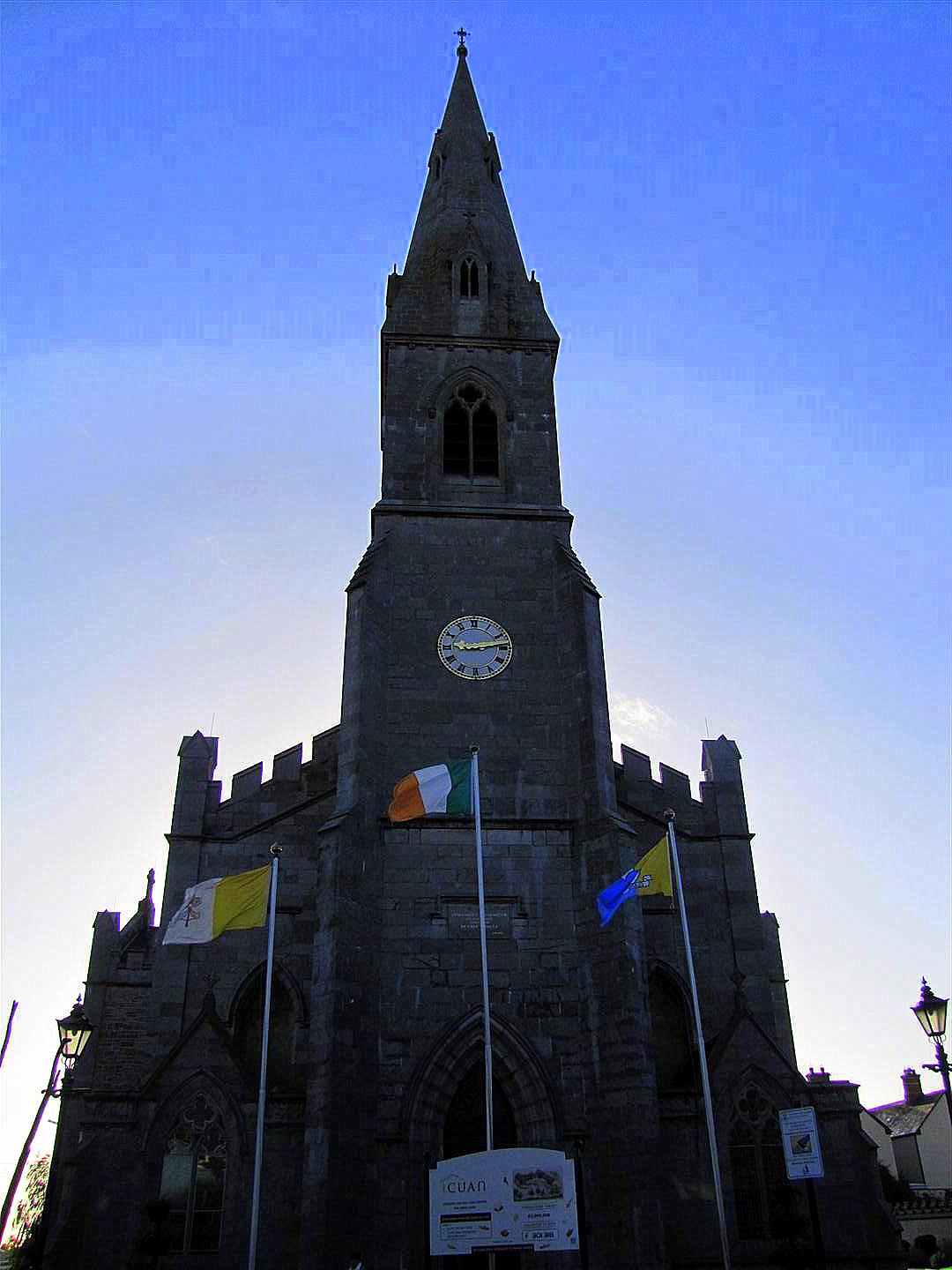"In 1735, Catholics of Ennis built a solid chapel in a laneway which soon attained the name Chapel Lane. Although the penal laws were still rigidly enforced Catholics were allowed to practice as long as they did so unobtrusively.
For several hundred years after the Reformation, a Catholic cathedral was out of the question in either Killaloe or Kilfenora. When a new parish church was being built in Ennis in the 1830s the man behind the project, Dean Terence O’Shaughnessy P.P., felt that one day it might be used as the cathedral church of the diocese. The new church was opened in 1843, while the tower and spire were added in 1874. When Thomas McRedmond was appointed coadjutor bishop of Killaloe in December 1889 he decided to live in Ennis, the first bishop to do so for well over one hundred years. Bishop McRedmond remained there after he succeeded as bishop of the diocese in 1891 and since then all his successors as bishops of Killaloe have also lived in Ennis. As a result the parish church of Ennis has been used as a cathedral for nearly a century. As it was not specifically built for this purpose it is called a pro-cathedral.

By the early years of the nineteenth century, the Chapel Lane building was too small and too awkward to gain access to. In 1821, a parochial meeting was held at which it was decided to build a new chapel. Seven years later, in January 1828, Francis Gore, a Protestant, donated a fine site on the edge of the town asking only a nominal rent. Shortly after he had got the site, Dean Terence O’ Shaughnessy issued instructions for its design: “The Chapel is to be 120 feet in length and fifty feet wide, the T to be 100 feet by 60. The elevation of the building to be in proportion”. The architects were quick to respond and by July 1828, a plan was selected.
The winning design was by Dominic Madden, a well-known architect of the day. The style is a very simple form of Gothic. Work was in progress on the foundations in June 1828 but nothing more was done until 1831 because of a dispute between Dean O’Shaughnessy and the Franciscans, who had opened their own chapel in Ennis in December 1830. Their right to do so was contested by the Dean, who saw Franciscans drawing on limited financial resources which were needed for the cathedral fund. After an appeal to Rome amicable relations were restored in 1832. Hardly had one dispute been settled than the pugnacious dean was in conflict with another group of religious for exactly the same financial reasons.
Dean O’Shaughnessy died in 1848 aged 86 or 87, and was buried in the cathedral he had done so much to build. In 1871 construction of the tower "Quin Abbey was built between 1402 and 1433 by Sioda Cam MacNamara, and spire was undertaken by Maurice Fitzgerald, who, conceivably with some slight modifications, implemented Madden’s design. The cathedral is built of limestone ashlar and has a crenellated parapet and tall pointed windows with tracery. The original façade has been partially obscured by the porches, but the original doorways can still be seen from the inside.
The interior of the cathedral was completed by 1861 under the supervision of J. J. McCarthy. The arcades and piers, the panelled ceiling and the organ gallery at the west end are the work of McCarthy, as were the altars (all of Caen stone, alabaster and Irish Marble) and reredos. McCarthy is responsible for the internal pillars, with traceried spandrels, and galleries.
Ennis cathedral is almost totally devoid of representational stained glass, having only one such window, erected in the former baptistery in 1903 in memory of Fr. Dan Fogarty, Administrator of Ennis 1878-88.
The building was re-decorated in a renovation begun in 1894 under the direction of Joshua Clarke, father of Harry Clarke. The fresco of the Assumption, which stood behind and above J. J. McCarthy's (demolished) high altar, is by Nagle and Potts.
Ennis Cathedral was one of the first in the country to undergo "reordering" according to a perceived need to bring it into conformity with the liturgical requirements of the Second Vatican Council. The altar rails, pulpit and high altar were removed, although the reredos was allowed to remain.
The guiding light in this was Michael Harty, dean of Maynooth College and subsequently Bishop of Killaloe. Although not an academic nor a trained liturgist, and more at home in teaching rubrics, Michael Harty acquired a reputation in church architecture circles for boldly going where no one went before and exercised a main morte on the design /execution of many Irish churches from the seventies on - his first being the ruination of St Mary's Chapel in Maynooth College. Andy Devane was the architect for the Ennis "reordering", backed up by the subtle aesthesia of Enda King. The new altar and ambo were done in the erratic natural boulder style highly reminiscent of the de Bello Gallico's descriptions of druidic ritual." - Wikipedia
Even though construction was begun on the cathedral was begun in 1828 and opened in 1843 the church did not become the diocese cathedral until 1990.
The cathedral is open daily and has the following mass times:
Monday to Friday: 7.45am, 10.00am, 7.30pm
Saturday: 10.00am, 6.30pm
Sunday: 9:00am, 10:30am, 12:00am
An extensive narrative history of the cathedral with many photos can be found in this document.